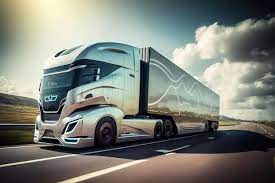Autonomous vehicles, once a futuristic concept, are rapidly becoming a reality in the logistics industry. From last-miledelivery drones to self-driving trucks, these innovative technologies are reshaping the way goods are transported and managed. In this article, we will explore the implications of autonomous vehicles in logistics, from their applications and benefits to the challenges and future outlook.
Introduction to Autonomous Vehicles
Autonomous vehicles, also known as self-driving or driverless vehicles, are vehicles capable of navigating and operating without human input. Utilizing a combination of sensors, cameras, radar, and advanced algorithms, these vehicles can perceive their environment and make decisions accordingly. The concept of autonomous vehicles has evolved over the years, starting from basic cruise control systems to sophisticated self-driving cars and trucks.
Applications of Autonomous Vehicles in Logistics
Last-mile Delivery
One of the most promising applications of autonomous vehicles in logistics is last-mile delivery. Companies like Amazon and UPS are experimenting with delivery drones and autonomous robots to efficiently transport packages from distribution centers to customers’ doorsteps. These vehicles can navigate through urban environments and deliver goods quickly and cost-effectively, reducing delivery times and operational costs.
Warehousing Operations
Autonomous vehicles are also revolutionizing warehousing operations by automating tasks such as inventory management, picking, and packing. Automated guided vehicles (AGVs) and robotic arms can work seamlessly together in warehouses, optimizing space utilization and streamlining workflows. This automation leads to faster order fulfillment and reduced errors, enhancing overall efficiency.
Freight Transportation
In the realm of freight transportation, autonomous trucks are poised to transform the industry. With advancements in AI and connectivity, trucks equipped with self-driving technology can travel long distances without the need for constant human supervision. This autonomy not only increases efficiency but also improves safety by reducing the risk of accidents caused by human error.
Benefits of Autonomous Vehicles in Logistics
Efficiency and Cost-effectiveness
One of the primary benefits of autonomous vehicles in logistics is their ability to improve efficiency and reduce costs. By eliminating the need for human drivers, companies can operate their fleets around the clock, maximizing productivity and minimizing downtime. Additionally, autonomous vehicles can optimize route planning and vehicle utilization, further enhancing efficiency.
Improved Safety
Autonomous vehicles have the potential to significantly improve safety on the roads. With advanced sensors and real-time data analysis, these vehicles can detect and react to potential hazards faster than human drivers. This technology has the potential to reduce the number of accidents caused by human error, saving lives and reducing injuries.
Environmental Impact
The adoption of autonomous vehicles in logistics can also have positive environmental implications. By optimizing routes and reducing fuel consumption, autonomous vehicles can lower carbon emissions and contribute to a greener transportation ecosystem. Additionally, the use of electric and hybrid autonomous vehicles can further reduce the industry’s carbon footprint.
Challenges and Concerns
While the potential benefits of autonomous vehicles in logistics are significant, there are several challenges and concerns that need to be addressed.
Regulatory Hurdles
One of the biggest challenges facing the widespread adoption of autonomous vehicles is the lack of clear regulations and standards. Government agencies are still grappling with how to regulate these technologies and ensure their safety and reliability on public roads. Without clear guidelines, companies may hesitate to invest in autonomous vehicle technology.
Technological Limitations
Despite rapid advancements in technology, autonomous vehicles still face limitations in certain conditions. Factors such as inclement weather, complex urban environments, and unpredictable human behavior pose challenges to the safe operation of autonomous vehicles. Addressing these technological limitations will be critical to realizing the full potential of autonomous vehicles in logistics.
Job Displacement
The rise of autonomous vehicles in logistics has raised concerns about job displacement in the transportation industry. As companies automate their fleets, there is a risk of truck drivers and other transportation workers losing their jobs. Efforts must be made to retrain and reskill workers for new roles in the evolving logistics landscape.
Current Trends and Developments
Despite these challenges, there are several promising trends and developments shaping the future of autonomous vehicles in logistics.
Integration of AI and IoT
Advancements in artificial intelligence (AI) and the Internet of Things (IoT) are driving innovation in autonomous vehicle technology. These technologies enable vehicles to communicate with each other and with infrastructure, optimizing traffic flow and enhancing safety. As AI and IoT continue to evolve, autonomous vehicles will become even more intelligent and capable.
Collaboration Between Tech and Logistics Companies
Tech companies and logistics providers are increasingly collaborating to develop and deploy autonomous vehicle solutions. Partnerships between companies like Tesla, Waymo, and FedEx are driving innovation in areas such as autonomous trucking and delivery drones. By leveraging each other’s expertise, these collaborations accelerate the adoption of autonomous vehicles in logistics.
Pilot Programs and Real-world Testing
Many companies are conducting pilot programs and real-world testing of autonomous vehicles to gather data and refine their technologies. From autonomous delivery vehicles in urban areas to self-driving trucks on highways, these tests provide valuable insights into the capabilities and limitations of autonomous vehicle systems. This real-world experience is essential for building trust and confidence in autonomous vehicles.
Future Outlook
The future of autonomous vehicles in logistics is full of possibilities and opportunities.
Expansion of Autonomous Fleets
As technology continues to improve and regulations evolve, we can expect to see a significant expansion of autonomous vehicle fleets in logistics. Companies across industries will increasingly invest in autonomous vehicles to optimize their supply chain operations and stay competitive in a rapidly changing market.
Enhanced Autonomy Levels
Advancements in AI and sensor technology will lead to higher levels of autonomy in vehicles, enabling them to operate in a wider range of conditions. Fully autonomous vehicles capable of navigating complex urban environments and interacting safely with pedestrians and other vehicles will become a reality.
Impact on Traditional Logistics Models
The widespread adoption of autonomous vehicles will inevitably disrupt traditional logistics models. Companies will need to adapt to new technologies and business models to remain relevant in the digital age. Those that embrace autonomy and innovation will thrive, while those that resist change may struggle to compete.
Conclusion
In conclusion, the future of autonomous vehicles in logistics is bright and promising. From last-mile delivery drones to self-driving trucks, these innovative technologies have the potential to revolutionize the way goods are transported and managed. While there are challenges and concerns to address, the benefits of autonomous vehicles—such as improved efficiency, safety, and environmental impact—are too significant to ignore.

